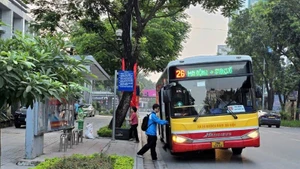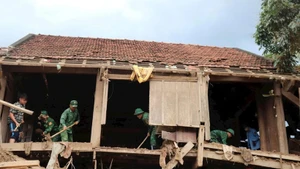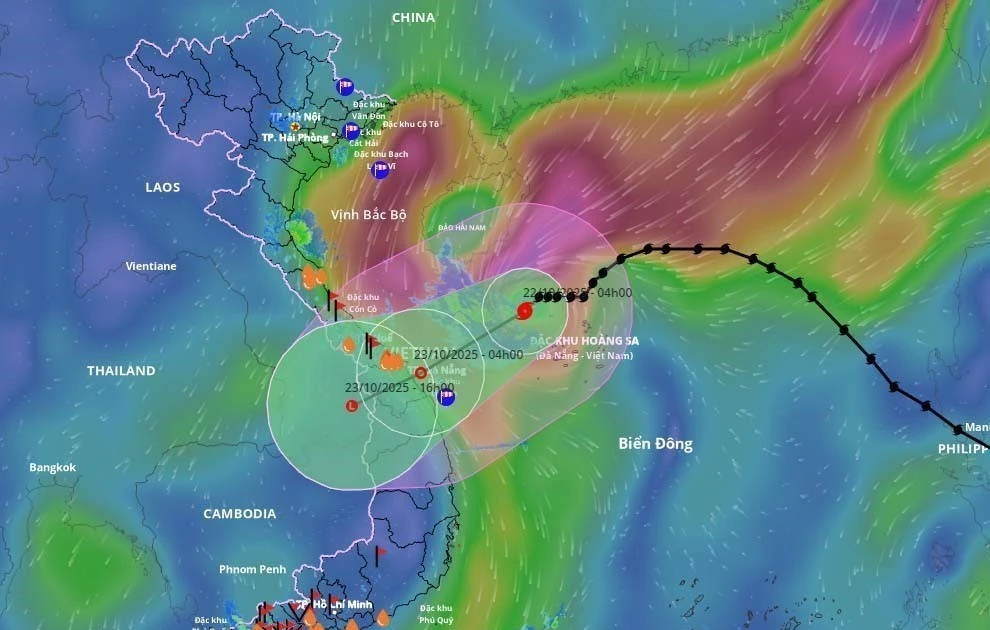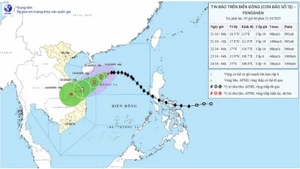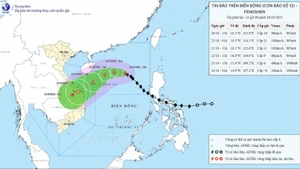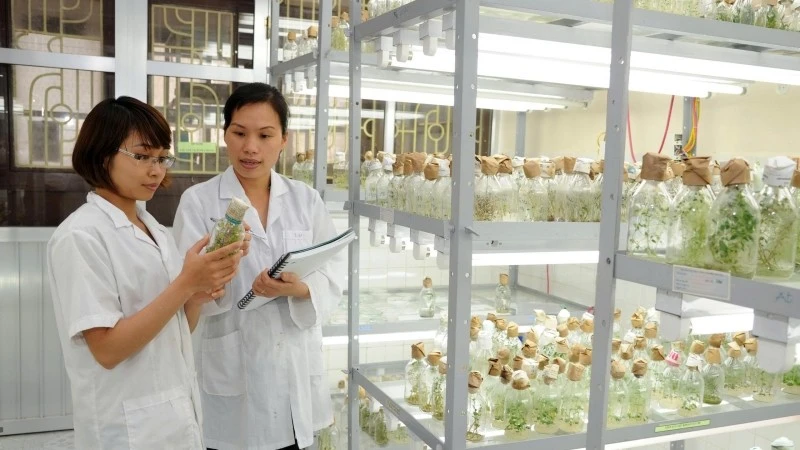Traffic insecurity in the areas around schools is common.
For example, on Nguyen Cong Hoan Street (Giang Vo Ward), there is a cluster of three schools: Ngoc Khanh Primary School, Phan Chu Trinh Secondary School, and Tuoi Tho Kindergarten. There are sidewalks around these schools, but they are always full of cars, shops, garbage trucks, and there is no space for pedestrians.
Although the government has diverted traffic, handled violations, and increased propaganda, the results are not sustainable.
Due to these safety concerns, most families do not allow their children go to school by themselves.
Bright spots in school traffic safety
Organising safer streets for students in Ha Noi is a project supported by the Bloomberg Philanthropies Global Initiative for Road Safety (BIGRS). This project has focused on safe transport infrastructure solutions developed by the Global Designing Cities Initiative (GDCI).
In 2024, three school clusters have benefited from this initiative.
The Sai Son school cluster is located at the intersection of a busy traffic route, with about 8,000 vehicles passing through the area every day, including many buses, coaches, and large trucks. Walking and crossing the street for pedestrians, including students, is very difficult and dangerous.

To overcome this situation, the project team organised field observations and used simulation models to select the optimal design option.
The selected option includes designing traffic islands to create shelters to separate traffic and reduce walking distance across the street, creating raised walkways for students to cross the street and reduce vehicle speed. In this project, the Department of Construction also tested for the first time the priority bicycle lane in Ha Noi.
Nguyen Du Primary School (Ha Dong) is located in a residential area, where sidewalks are often occupied by street vendors and parked motorbikes, forcing students to walk on the roadway, creating unsafe conditions.
To improve the situation, the project has organised a “bay” for motorbikes to park on the road for parents, ensuring a clear walkway of at least 1.8 metres for students, and constructed raised walkways in front of the school gate and at intersections; expanding the curb to create a shelter island, narrowing the travel lane to 3m in one direction, reducing the speed of motor vehicles, ensuring students and parents are better protected when crossing the road.
In addition, the Department of Construction also organised traffic diversion from a distance, placing warning signs in school areas. This is also the first time the department has piloted limiting vehicle speed to less than 30 km/h when approaching school areas.
The Xuan Dinh school cluster includes three schools located on Xuan Dinh Street, which is relatively narrow and has a lot of traffic, with narrow sidewalks that are often occupied, causing insecurity for pedestrians, especially young students.
The project aims to improve safety conditions for students through a number of solutions such as organising raised walkways at intersections and school gates, widening sidewalks with markers, installing speed bumps and speed limit signs, warning signs for school areas, and organising parking areas for parents at primary school gates.
All three projects mentioned above were implemented in the 2023-2024 period and to date, all three models have maintained their effectiveness. The successes of these community projects have become a motivation and experience for the Department of Construction and supporting organisations to continue implementing new initiatives and new approaches, creating safer roads to school for children.
Community participation in building safe roads to schools
Also part of the Partnership for Healthy Cities (PHC) network and the BIGRS, in 2025, the Van Phuc Primary School School-Safety Project marked an important step forward in building safer, more child-friendly streets in Ha Noi.
The project was chaired by the Ha Noi Department of Construction, in coordination with several international organisations, including HealthBridge Viet Nam, GDCI, Vital Strategies, and the local government and school board.
The difference from previous projects is that with Van Phuc Primary School, many rounds of community consultations were organised, with the participation of students, parents, teachers, and local people to jointly create a priority design option.
The proposed design was then tested in the field through a pilot intervention to gather feedback and observe how the street space was used.
Based on the results, the project will refine the design and implement permanent infrastructure such as raised crossings and speed bumps to reduce vehicle speeds and create a safer environment for all.

It is expected that the pilot implementation at Van Phuc Primary School will take place in October 2025, and by November 2025, the completed guidelines will be submitted to the Department of Construction for promulgation.
Hopefully, the above models and initiatives will continue to receive support from authorities at all levels, schools, and parents — bringing practical, sustainable results and allowing these models to be replicated across the city so that children’s journey to school is truly safe.

